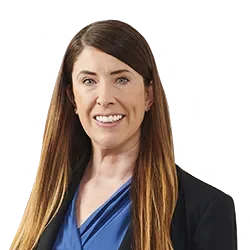ASAP
Colorado Expands Coverage and Amount of Leave under Health Emergency Leave with Pay (HELP) Rules
UPDATE: The HELP Rules expired after July 14, 2020, and, on July 15, 2020, were replaced by the Healthy Families & Workplaces Act (HFWA), which, in part, requires employers to notify employees of emergency paid sick leave (EPSL) the HFWA requires from July 15 through December 31, 2020 (poster available in English & Spanish). Monitor littler.com for forthcoming additional information concerning the HFWA's EPSL requirements.
Updated May 11, 2020
On April 27, 2020, the Colorado Department of Labor and Employment amended its Health Emergency Leave with Pay (HELP) Rules, which require certain employers to provide employees paid sick leave for a covered COVID-19 reason. The HELP Rules were originally issued on March 11, 2020, and minor amendments expanding industry coverage were subsequently issued on March 26 and April 3. The latest changes are a response to Governor Polis’s April 26 Safer at Home Executive Order, which gradually allows certain businesses to operate at greater capacity. Key portions of the April 27, 2020 amendments to the HELP Rules are highlighted below.
Covered Employers. The amended Rules cover employers engaged in, or employing workers in, specific fields. The Rules previously covered the fields of leisure and hospitality, food and beverage manufacturing, food services, retail establishments that sell groceries, child care, education at all levels (including related services), home health care, nursing homes, and community living facilities. The amended Rules expand the covered fields to include the following:
- Retail (other than establishments that sell groceries): Establishments engaged in retailing merchandise and rendering services incidental to the sale of merchandise to the general public for personal or household consumption, or to businesses and institutional clients. Examples include building material and garden supply stores; clothing and accessories stores; health and personal care stores; pharmacies; electronics and appliance stores; furniture and home furnishing stores; motor vehicle and parts stores; office supplies, stationary, and gifts stores; food and beverage stores; grocery stores and retail establishments that sell groceries; general merchandise stores, including warehouses and supercenters; gas stations; tobacco stores; liquor stores; sports, hobby, musical instruments, and bookstores; pet and pet supplies stores; used merchandise stores, pawn shops; and manufactured and mobile home dealers.
- Real estate sales and leasing: Establishments primarily engaged in selling, renting, or leasing real estate, and establishments providing related services. Examples include real estate agencies; real property management; and rental and leasing services.
- Offices and office work: All work performed in an office environment, rather than in non-office settings such as factories, farms, construction sites, or other non-office sites away from the employer’s physical location. This category includes employers that are predominantly located in offices (e.g., law firms), as well as the portion of any employer’s operations performed in an office setting (e.g., an administrative office housed within a factory).
- Elective health services: Those medical, dental, or other health service employees who work predominantly on elective procedures. This category includes establishments that engage predominantly in elective procedures (e.g., cosmetic surgery), even if a portion of their work is non-elective (e.g., emergency surgeries performed by cosmetic surgeons).
- Personal care services: Establishments that provide appearance care services or other personal care to consumers, as well as establishments that provide pet or animal care such as boarding, grooming, sitting, and training pets, but excluding veterinary care. Examples include hair salons and barber shops; hair styling; nail salons; make-up and cosmetology salons, including permanent make-up; spas, day spas, and massage therapy establishments; tattoo or piercing parlors; tanning salons; animal shelters; pet boarding services and kennels; animal grooming services; and pet training and obedience services.
Amount of Leave Employees Can Use. Previously, employers were required to provide up to four days of paid sick leave. Notably, the CDLE has confirmed that, where an employer previously provided leave to an employee of up to four days under the original Rules, the employer is not required to provide an additional two weeks (or 80 hours) under the Amended Rules. Rather, any leave provided under the original Rules counts towards the new required maximum leave of two weeks (80 hours), assuming all other requirements have been met..
Reasons Employees Can Use Leave. Employees can take leave if they have flu-like (or now respiratory illness) symptoms and are being tested for COVID-19, or if they are under instructions from a health care provider (or now an authorized government official) to quarantine due to risk of having COVID-19.
No Requirement to Provide Additional Paid Leave. As with the original Rules, the amended Rules do not require an employer to offer additional days of paid sick leave if it already offers all employees an amount of paid leave sufficient to comply with the Rules. However, an employee who already exhausted their paid leave under an existing employer policy, but then qualifies for paid sick leave under the HELP Rules, is entitled to the additional days of paid leave.
When Leave Ends. Under the original Rules, leave ended when an employee received a negative COVID-19 test. Now, an expanded list of conditions must be satisfied, including: 1) a negative test; 2) the employee is fever-free for 72 hours; and 3) the employee’s other symptoms have resolved. However, leave cannot end before an employee has been off for at least seven calendar days, or 10 calendar days for health care workers.
Documentation Substantiating Absences. The amended Rules reinforce that employers cannot require documentation either before leave begins or during an absence, while also appearing to relax documentation standards. For example, although the original Rules did not specify the type of documentation employees were required to provide, the amended Rules state that employees can provide a self-drafted written statement instead of documentation from a health care provider.
Rate of Pay. Previously, employers were required to pay employees for up to four days at 100 percent of their regular rate of pay. Now, however, up to 80 hours of leave must be provided and paid at two-thirds of an employee’s regular rate of pay.
Penalties. The amended Rules contemplate penalties for non-compliance under Colorado Revised Statutes sections 8-1-116, 8-1-140, 8-4-120, and 8-6-115.
No Retroactive Application. The amended Rules do not apply retroactively. Thus, for example, if an employee completed a COVID-19 test and received a test result before the amended Rules covered the employer’s industry, the employer is not required to provide any amount of paid leave for any pre-coverage time. However, if the employee is missing work because a health care provider instructed the employee to quarantine due to a risk of having COVID-19, the employee will now be eligible for additional paid leave, even if the prior maximum of four days was already exhausted, up to a maximum of two weeks (80 hours).
Interaction with Other Laws. If other federal, state, and/or local laws apply, the laws should be applied in a manner that provides the greatest protection or sets the highest standard.
As with the prior versions, the amended Rules will remain in effect for 30 days or for the duration of the declared state of disaster emergency, whichever is longer, up to a maximum of 120 days after the Rules’ adoption.

